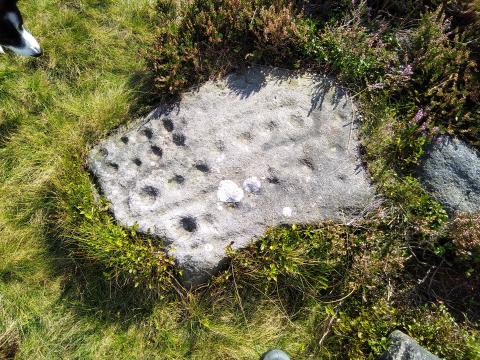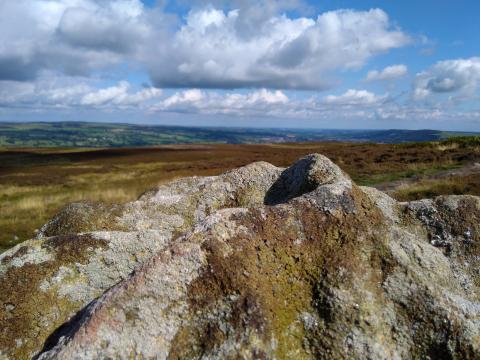Idol Stone

I was atop Rombald’s Moor over Ilkley recently with two relatives. Situated between Airedale and Wharfedale, it is littered with ancient stone monoliths, artwork and other debris of long-gone civilization. While looking for a stone circle (which then eluded us) we came across the Idol Stone. It measures only 3 feet by 2.6 and has 22 cups carved out of it, including 7 in its middle around which is a groove, giving it something of a snake-like appearance. Quite why ancient folk felt the need to transform a rock into so strange an artefact, we cannot tell. Its name of 'Idol Stone' is a Victorian invention; it may not have been the object of someone’s religious devotion. Unlike the other two dozen or so sets of carvings on the moor, this is the most artistically impressive and might signify a representation of life (a snake? A head count?).

All humans, both then and now, create idols to which they bow down and give honour. Previous generations carved them from stone and wood; we modern sophisticates manufacture them in factories, books or imaginations. An idol is anything which distracts us from the Creator, or robs Him of our rightful devotion.
Paul tells the Corinthians: Therefore, my dear friends, flee from idolatry. John tells his readers: Dear children, keep yourselves from idols. The friendly and fatherly manner of the command does not detract from the seriousness of the issue. Anything, anything at all, which would hinder our walk with God must be removed, or we from it.
Confounded be all they that serve graven images, that boast themselves of idols: worship him, all ye gods. Psalm 97:7

- Log in to post comments


 Sunday Worship 10.45am & 6.00pm
Sunday Worship 10.45am & 6.00pm